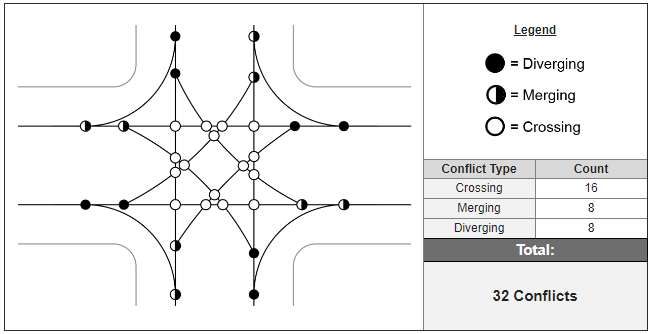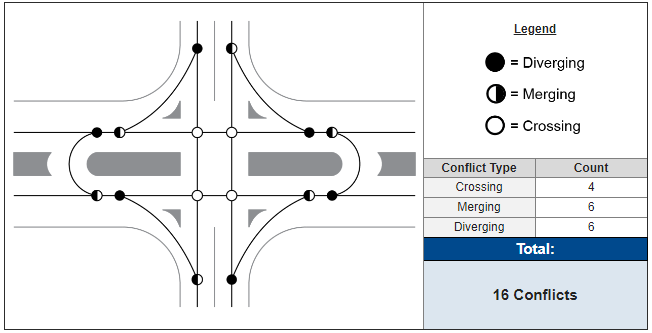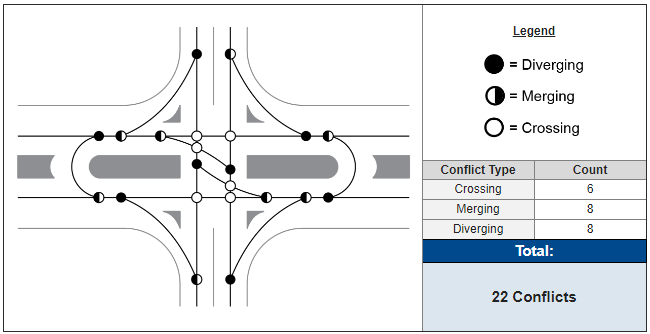Innovative Intersections and Interchanges
← Innovative intersections main page
An MUT is also known as:
- Michigan left-turn intersection
- Median U-turn crossover
- Boulevard turnaround
- Michigan loon
- ThrU-turn intersection
 |
 |
What Is A MUT?
- Intersection design where left-turn vehicles from one or both roads make U-turns at dedicated median openings to complete the desired movement
- Intersection can be designed with median U-turns on one or both roads
- Median U-turns can be designed as signalized, stop controlled, or yield controlled
Where Should It Be Considered?
- On median-divided highways
- At intersections
- With moderate to heavy through-traffic volumes and low to moderate left-turn traffic volumes
- With three or four legs
Benefits
- Improved safety: Reduces the number of points where vehicles cross paths and decreases the potential for right-angle crashes
- Increased efficiency: Eliminates left-turn movements from the main intersection, allowing for fewer traffic signal phases, which reduces delay and increases capacity
- Shorter wait times: Fewer traffic signal phases means less time stopped at the main intersection
- Cost effective: A MUT can be more cost effective than adding lanes to increase capacity
How to Navigate
Below shows how to navigate a MUT intersection. Click the image to view a larger version or watch the video.
Conflict Points
The number of conflict points (locations where vehicle travel paths intersect) is one metric that can be used to evaluate the safety of an innovative intersection or interchange.
There are three categories: crossing, merging or diverging.
In general, merging and diverging conflict points — where vehicles are moving in the same direction — are associated with less severe crash types than crossing conflict points where vehicles are moving in opposite directions.
These diagrams below compare possible vehicle travel movements and associated conflict points at a conventional four-leg intersection to an MUT.
These diagrams represent a general case, with one travel lane in each direction, and do not take into account pedestrian or bicycle movements at an intersection or interchange.
When compared to a conventional four-leg intersection, a full MUT, where left-turn vehicles from both roads make U-turns at median openings, has 12 fewer crossing, two fewer merging, and two fewer diverging conflict points.
A partial MUT, where only left-turn vehicles from the major road make U-turns at median openings, has 10 fewer crossing conflict points when compared to a conventional four-leg intersection.
Conventional Intersection: Conflict Points

MUT: Conflict Points (Full)

MUT: Conflict Points (Partial)






